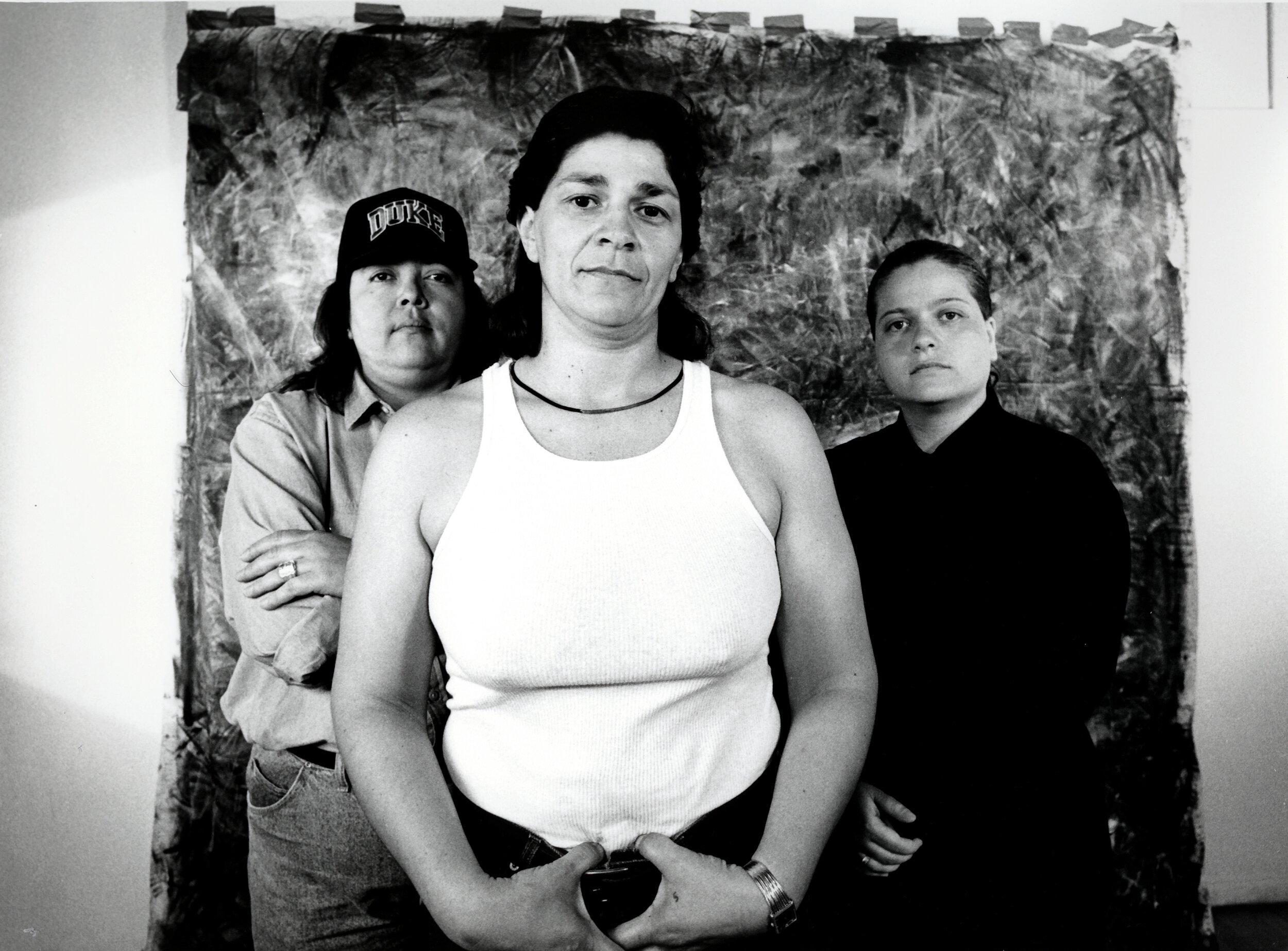Exhibition Review: Laura Aguilar's Show and Tell
Laura Aguilar, Stillness #25 , 1999, Gelatin silver print, 9 x 12 inches. © Laura Aguilar / Gift of the Laura Aguilar Trust of 2016, jointly acquired by the Vincent Price Art Museum Foundation and the Los Angeles County Museum of Art.
Prior to her passing in 2018, Laura Aguilar was many things. Photographer. Feminist. Performance artist. Activist. Her work in photography explored what many fear capturing on film: large bodies, queer lives, and struggles with identity and self-doubt. Her perfectionism was legendary, and her work transgressive. Now, three years after her death, curator Sybil Venegas and the Vincent Price Art Museum bring together her exploratory body of work into an exhibition that disrupts traditional understandings of the body and the soul that lives within it.
Laura Aguilar, 12 Lauras , 1993, Twelve gelatin silver prints, 24 x 17 inches each. © Laura Aguilar / Courtesy of the Laura Aguilar Trust of 2016 and the UCLA Chicano Studies Research Center.
Showing now at the Leslie-Lohman Museum of Art, Laura Aguilar: Show and Tell brings to light images of queer, Chicanx perspectives from an archive spanning more than three decades. The exhibition, which combines video, collage, and other ephemera along with Aguilar’s photographs, presents a profound exploration of the artist’s varying identities as they applied throughout her lifetime. Working class. Queer. “Unattractive,” as society would so often label her larger-bodied shape. All forming boundary lines that tried to keep her in place, tried to lock her in a box to be shoved in the garage and forgotten about — until Aguilar decided she’d had enough.
Laura Aguilar, Nature Self-Portrait #14 , 1996, Gelatin silver print, 16 x 20 inches. © Laura Aguilar / Courtesy of the Laura Aguilar Trust of 2016 and the UCLA Chicano Studies Research Center.
Bodies are her canvases as much as they are for sculptors or fashion designers—many nude, and many presenting the human body in its natural state, rather than an idealized form. Aguilar presents what cannot be expressed in words and her work challenges ideas of what is “acceptable” in art, with triptychs like Three Eagles Flying and Don’t Tell Her Art Can’t Hurt. Can we have the nakedness of Michaelangelo’s David, or of Playboy models, but not of larger women like Aguilar? What is the difference? Where is the line drawn, and why is it always drawn on the opposite side of the playing field from realism?
Laura Aguilar, Plush Pony #2 , 1992, Gelatin silver print, 11 x 14 inches. © Laura Aguilar / Gift of the Laura Aguilar Trust of 2016, jointly acquired by the Vincent Price Art Museum Foundation and the Los Angeles County Museum of Art.
Aguilar remains firmly on the other end of the field, showcasing marginalized identity and the things that makes us who we are. Show and Tell presents Chicanx communities at their most authentic, and recognizes the disconnect that many may feel within them. The show highlights the intersection of Aguilar’s ethnicity with her sexuality, as well as her struggles with mental health and with her weight—bringing together a whole as exposing and intimate as looking into a stranger’s private journal. The simple act of standing in front of a camera, representing something far beyond what the lens can capture, is deeper and more baring than any of Show and Tell’s explicit nudity.
Laura Aguilar, Three Eagles Flying , 1990, Three gelatin silver prints, 24 x 20 inches each. © Laura Aguilar / Courtesy of the Whitney Museum of American Art, New York. Purchase, with funds from the Director's Discretionary Fund. 2019.393a-c.
Honesty, whether brutal and harsh or soft and revealing, is what binds Aguilar’s canon of work. Her photos put her fear and worry on the line, as well as her joy and pride. She asked “How Mexican is Mexican,” and proclaimed that she “Will Work for Axcess," acknowledging a universal truth that “Access+Opportunity=Success”. (And that many artists of color cannot complete that equation.) Her work is not quite documentary, but strikes the same chord with audiences. Her Latina Lesbians and Plush Ponies are familiar faces—friends from the houses down the street, not idealized forms sent through weeks of post-processing. Her work exposes experiences and identities that so many share, and yet never see reflected. Show and Tell is an open door to a world beyond superficial labels: the world that lies packed within those boxes—what we see when we peel back the skin, and reveal the colors of the soul underneath.
Laura Aguilar, Don’t Tell Her Art Can’t Hurt (Part A), 1993, Gelatin silver print, 57 x 40 inches. © Laura Aguilar / Jointly acquired by the Vincent Price Art Museum Foundation, with funds provided by the Foundation and the Newton Family and the Los Angeles County Museum of Art, with funds provided by Frank Masi and Donna Kolb and the Ralph M. Parsons Fund.
Laura Aguilar: Show and Tell is organized by the Vincent Price Art Museum, in collaboration with the UCLA Chicano Studies Research Center. It is on display now through June 27th.













